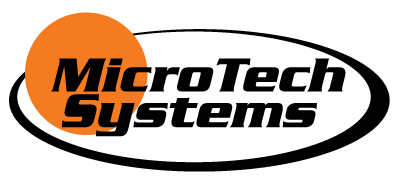
Should You Outsource IT in 2025? The Real Cost of In-House vs. Managed Services
As technology becomes more mission-critical, the debate between building an internal IT team or outsourcing to a Managed Service Provider (MSP) is heating up, especially among CFOs and operations leaders looking to optimize performance and budget.
The True Cost of IT Support: Direct vs. Indirect Cost
When evaluating IT strategies, it's essential to distinguish between direct and indirect costs:
Direct Costs:
- In-House IT: These include salaries, benefits, training, and equipment for IT staff. For instance, the average salary for an IT engineer can be substantial, and when factoring in benefits and ongoing training, the expenses escalate.
- MSP: Typically, MSPs operate on a predictable monthly retainer, which can be more cost-effective, especially for small to medium-sized businesses.
Indirect Costs:
- In-House IT: These encompass expenses like overtime for 24/7 support, costs associated with downtime, and investments in tools and software.
- MSP: MSPs often include 24/7 support, advanced tools, and proactive monitoring in their packages, reducing unexpected costs and downtime.
5-Year Total Cost of Ownership (TCO): Who Wins?
After running comparative models across user counts from 50 to 500+, here’s what we found:
|
Bottom line: For small to mid-sized businesses (SMBs), outsourcing IT support to a managed provider delivers significant cost savings and broader capability, especially if your team doesn’t need constant on-site presence.
MSP vs. In-House IT Department: A Comprehensive Comparison
|
Feature |
In-House IT |
Managed Service Provider (MSP) |
|---|---|---|
|
Cost Structure |
High fixed costs (salaries, benefits, training) |
Predictable monthly fees |
|
Expertise Availability |
Limited to the hired staff's knowledge |
Access to a broad range of specialists |
|
Scalability |
Requires hiring/training new staff |
Easily scalable based on needs |
|
24/7 Support |
May require additional staffing |
Typically included in service packages |
|
Tool and Software Access |
Additional investments required |
Often included in services |
|
Downtime Risk |
Higher if understaffed or under-resourced |
Lower due to proactive monitoring and support |
When evaluating the best approach to managing your company's IT needs, it's essential to consider the distinct advantages and challenges associated with both in-house IT teams and Managed Service Providers (MSPs).
- Cost Structure: In-house IT departments often entail substantial fixed costs, including salaries, benefits, ongoing training, and investments in infrastructure. These expenses can fluctuate unpredictably with changing business requirements and technological advancements. Conversely, MSPs typically operate on a flat-fee subscription model, offering predictable monthly costs. This model often encompasses a suite of services such as sophisticated security software, data management tools, and cloud computing services, potentially leading to significant cost saving.
- Expertise and Scalability: MSPs provide access to a broad range of IT specialists with expertise across various platforms and technologies. This diverse knowledge base allows for rapid adaptation to new challenges and technologies. In contrast, in-house teams may have limited expertise confined to their specific roles, making it challenging to address diverse IT needs. Scaling such teams requires time-consuming hiring and training processes.
- Support and Downtime: MSPs often offer 24/7 monitoring and support, proactively addressing issues before they escalate, thereby reducing downtime. In-house teams might struggle with providing round-the-clock support, leading to potential downtime during off-hours.
- Cybersecurity and Compliance: Maintaining up-to-date security measures and ensuring compliance with industry regulations can be resource-intensive for in-house teams. MSPs typically include robust security protocols and compliance assistance as part of their services, mitigating risks and ensuring adherence to standards.
- Flexibility and Adaptability: MSPs offer the flexibility to adjust IT resources based on business growth or seasonal demands. This adaptability allows businesses to scale their IT support without the friction of hiring or downsizing. In-house teams may find it challenging to adapt quickly to changing needs due to the time and resources required for recruitment and training.
In summary, while in-house IT teams offer direct control and familiarity with company-specific systems, MSPs provide cost-effective, scalable, and comprehensive solutions that can adapt to evolving business needs and technological advancements. The choice between the two should be based on a thorough assessment of your company's specific requirements, resources, and long-term strategic goals.
When Does a Hybrid IT Model Make Sense for a Business?
For organizations with 400 or more users, adopting a hybrid IT model can offer the optimal balance between control and efficiency. This approach combines the strengths of both in-house IT teams and managed IT service providers, allowing businesses to tailor their IT strategy to their specific needs.
In this model, the internal IT team focuses on on-site requirements, such as providing immediate support, managing proprietary systems, and overseeing daily operations. Their intimate knowledge of the company's infrastructure and culture ensures that critical systems receive personalized attention.
Simultaneously, partnering with an MSP brings in specialized expertise for tasks like 24/7 system monitoring, cybersecurity, cloud management, and executing large-scale IT projects. MSPs offer scalability and access to advanced tools that might be cost-prohibitive to maintain internally.
This shared responsibility model reduces operational risks and enhances resilience. By leveraging the strengths of both internal and external teams, organizations can achieve a more robust and flexible IT environment, often with reduced overhead costs.
In essence, a hybrid IT model allows larger organizations to maintain control over critical operations while benefiting from the specialized services and scalability that MSPs provide.
Want to speak to an IT Expert to Help?
At MicroTech Systems, we help growing companies design the right IT support model—whether that’s fully managed, hybrid, or a transition plan from internal-only support.
Book a free cost assessment with Microtech Systems, a Managed IT Services Provider in Boise. We’ll help you compare the options, run the numbers, and build an IT strategy that scales with your business. Hire the best remote it support for small businesses and save your costs.

